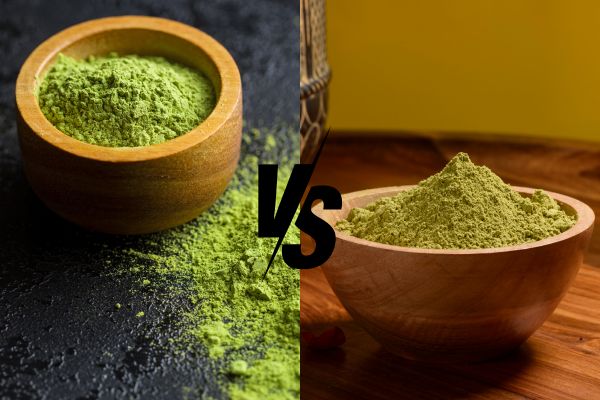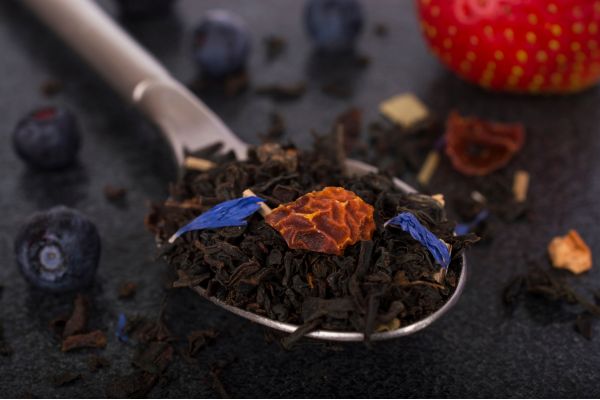How is green tea made? How to create this grassy and fresh drink? These might be some curious questions for those new to tea-drinking culture.
Contents
Introduction
Each region has its own way of producing green tea, leading to a wide variety of it. However, there are still some common stages in green tea production. In this article, FGC will help you answer the question “How is green tea made?” and explore some interesting information about this delicate beverage.

How to grow tea to make green tea?
Green tea is produced from the plant called Camellia sinensis, the same as black, white, oolong, and others. The tea varieties are different among countries and regions because of the differences in weather, soil, and water conditions. Tea plants are usually cultivated in mountainous areas, with direct sunlight and heavy rains. Although tea plants prefer water, leaving them sitting in it is not a good option. Therefore, it is ideal to situate them in a well-drained area, preferably on a slope or with rocky and sandy soil.
A tea plant might need two to three years to fully establish, so it is not recommended to harvest the leaves in the first three years. Besides, tea plants are often grown in the sun or naturally semi-shaded areas. However, there are shade-grown teas, usually cultivated in Japan, with more umami and a higher L-theanine level. Japanese even make special gardens to create a shady environment for tea leaves on purpose.

How is green tea made?
There might be some differences among regions and tea manufacturers, but the green tea-making process generally includes several steps: harvesting, fixation, rolling, drying, sorting, and packing. To preserve the quality, essence, and flavors of green tea, the processing should be done continuously.
Harvesting
Green tea processing starts with harvesting tea leaves. Tea leaves used to make green tea are usually the buds and one or two leaves below it, at about 4-15 cm long and 2-5 cm wide. The ideal method is to pick by hand, ensuring the best selection and quality of the fragile youngest leaves. To protect the highest quality, fresh leaves should be moved to the manufacturing plants as soon as possible, within 1-2 days.
For the highest quality green tea, the ideal time to harvest materials is during spring to early summer, usually from February to April, after the winter dormancy and before the explosive development at the end of the summer. However, good green teas can still be produced at other times of the year. China, India, Sri Lanka, Japan, and Vietnam are some of the most famous areas for planting Camellia sinensis plants, with the optimal climates and geographical conditions.

Fixation
The distinctive feature that makes green tea differ from black and oolong tea is that it is not oxidized. The fixation step is the key to preventing oxidation and keeping the aroma and color of green tea. The process of fixation means rapidly heating the leaves and maintaining the vibrant green color and natural taste by deactivating the oxidation-causing enzymes.
There are several fixation ways, including frying and steaming. The frying method is usually known as the Chinese-styled one and is more popular globally. The leaves are directly exposed to dry heat in a pan or other containers with a higher temperature than steaming. Thanks to technological developments, tea leaves are now quickly and easily fried in cutting-edge machines like rolling drums.
On the other hand, in traditional Japanese green tea processing, the leaves are heated through steam exposure close to 100°C. This method can retain the natural qualities and freshness of tea leaves, bringing a vivid green color and a more grassy taste. After steaming, some of the water in tea leaves evaporates. The amount of moisture left is ranging from 59% to 65%, making the leaves softer and easier for the next steps.
Rolling
After the fixing process, the tea leaves are rolled to enhance their flavor and taste. It is because when being rolled, the leaf cells are broken down, making the tea essence easier to dissolve into the water when brewing. After this step, tea leaves will shrink in size, curl tightly, and take on a glossy appearance. Currently, there are many modern technologies for this step to save time and labor force.

Drying
To prevent any further chemical reactions from occurring, the tea leaves are gone through the drying procedure. The moisture level is reduced to around 3-4%, protecting the freshness and extending the shelf life. Many methods can be applied to remove the leftover moisture, including direct exposure to the sun or via machines like conveyor dryers, drying ovens, or pans. Sometimes, several techniques can be combined and dry the leaves more than once, depending on manufacturers’ purposes.

Sorting
Green tea, after being dried, will be separated into different categories, mostly based on the leaf sizes. Based on specific purposes, there might be further procedures to get a stronger taste or better appearance.
Packing
The final step is packing to complete the production, protecting the best aroma and flavor of green tea before reaching consumers. The common packages are PP/PE bags, vacuum bags, or airtight cans. Depending on purposes and transportation methods, packaging can be flexible for different customers and regions.

Conclusion
Through 6 steps, the fresh tea leaves will become dry and curl, with a dark green color and a delicate aroma. If you are looking for a reliable green tea supplier, FGC is a worthy consideration. We are the leading tea manufacturer in Vietnam, with large tea farms and tea factories across the nation. Contact us now to get the best quality green tea.
About Future Generation Co., Ltd
We are FGC, the leading tea and beverage exporter in Vietnam and one of the biggest tea suppliers in the world. Our tea products are diverse in types, grades, and production methods. We provide customers with Loose tea (such as Black tea, Green tea, and Oolong tea), Herbal tea (such as Rose tea, Chamomile tea, and Lotus tea), and Specialty tea (such as Matcha), RTD Tea, and Tea Bags. Our mission is to become Vietnam’s leading healthy beverage company.
We ensure stable tea sources for domestic markets and exports with vast high-grown tea farms and available herb gardens. Our tea gardens and factories also meet international standards such as ISO, HACCP, KOSHER, HALAL, etc. In addition, we constantly innovate our machinery system, strengthen production capacity, and increase productivity. We also provide private label and customized packaging services for small and medium enterprises.
If you are a tea distributor, tea importer, teashop manager, or even tea lover, we are committed to being your prestigious tea source supplier in Vietnam!
Contact
Address: R4 building, Office Quarter 02, Royal City, 72A Nguyen Trai St., Thanh Xuan Dist., Hanoi.
Phone: +84 24 73 000 125/ +84 24 73 063 369
Mail: info@vietnam-tea.com
Website: https://vietnam-tea.com/
Facebook: https://www.facebook.com/fgcvietnamtea
LinkedIn: https://www.linkedin.com/company/fgcvietnamtea/
Sources:










